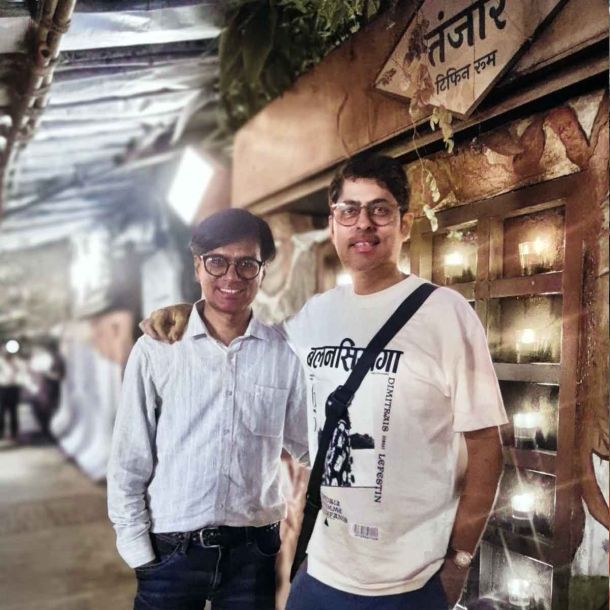More Coverage
Twitter Coverage
Satyaagrah
Written on
Satyaagrah
Written on
Satyaagrah
Written on
Satyaagrah
Written on
Satyaagrah
Written on
JOIN SATYAAGRAH SOCIAL MEDIA
"Same modus operandi": The Bengaluru Rameshwaram Cafe blast is possibly linked to ISIS Ballari module and Lashkar-e-Taiba, with the NIA taken the charge, Key arrests made, explosive materials seized, and concerns over public safety intensify in Karnataka

In an alarming revelation, the investigation into the Bengaluru Rameshwaram Cafe blast has unveiled possible connections to the ISIS Ballari module. Reports, citing official sources, have highlighted similarities in the methods used in the recent blast and previous cases linked to this notorious module.
|
Officials are particularly focused on the similarities in the assembly of the improvised explosive devices (IEDs) used in the Rameshwaram Cafe blast. Such devices are known trademarks of the ISIS module's operations, raising concerns about the group's ongoing activities in the region.
Furthermore, the way the blast was executed aligns with the pattern observed in past incidents, including the distressing Mangaluru cooker blast. This pattern suggests a potentially deeper network of operatives working within the state, possibly linked to the broader ISIS network.
The investigation is still underway, with authorities working diligently to confirm the extent of the ISIS Ballari module's involvement. The similarities in the modus operandi have become a crucial part of piecing together the puzzle of this attack, aiming to prevent any future threats that might arise from such terrorist networks.
In a significant operation last December, the National Investigation Agency (NIA) took a decisive step against terrorism by apprehending eight individuals linked to the ISIS Ballari module, including the group's leader, named Minaz. This operation spanned a wide geography, targeting 19 locations across several states and cities within India, such as Ballari and Bengaluru in Karnataka; Amaravati, Mumbai, and Pune in Maharashtra; Jamshedpur and Bokaro in Jharkhand, and also Delhi.
|
The raids were not just about making arrests; they led to the discovery and confiscation of materials and items that paint a worrying picture of the planned activities of this group. Authorities found explosive materials—Sulphur, Potassium Nitrate, Charcoal, Gunpowder, Sugar, and Ethanol—along with sharp weapons, unaccounted cash, and documents that were deemed incriminating. The haul also included smartphones and other digital devices, shedding light on the modern terrorist's toolkit.
The seized materials were reportedly intended for the creation of improvised explosive devices (IEDs), designed for use in terror acts. This detail underscores a chilling ambition to inflict harm and spread fear. Another disturbing revelation is the apparent strategy of carrying out "lone wolf" attacks, similar to what is suspected in the Bengaluru blast, echoing the tactics seen in the Mangaluru cooker blast case.
Adding to the intensity of the investigation, CCTV footage from the Rameshwaram Cafe following the explosion provided a glimpse of a suspect—a person donned in a white hat and mask, carrying a backpack, and wearing spectacles—entering the establishment. This footage is a critical piece of evidence, offering a direct link to the moment leading up to the tragic event.
|
|
The arrest of these individuals, the confiscation of explosive materials and weapons, and the identification of tactics such as "lone wolf" attacks illustrate the extensive measures taken by the NIA to dismantle terror networks within the country.
In a crucial step forward in the investigation of the Rameshwaram Cafe explosion, the investigative team has successfully seized vital components from the scene. These components include a timer, battery, circuit panel, and wires—all crucial parts of the explosive device used in the attack. The suspect, blending in as an ordinary customer, strategically placed a bomb within the cafe while simulating a normal breakfast routine.
The gathered materials, crucial for understanding the bomb's construction, have been sent to the Forensic Science Laboratory (FSL) for a detailed examination. This analysis is expected to provide further insights into the bomb's design and functionality, aiding the ongoing investigation significantly.
Emerging reports suggest that, besides the ISIS Ballari module, there may also be a connection to the Lashkar-e-Taiba (LeT) module, historically led by Abdul Karim Tunda, infamously known as the “Doctor of Bomb.” Interestingly, Tunda was acquitted in a related terrorist bombing case in Rajasthan just one day before the Bengaluru attack. This timing raises questions and adds complexity to the investigation, suggesting a potentially broader network of affiliations and collaborations among terror groups.
|
Furthermore, the National Investigation Agency (NIA) had previously thwarted a suicide attack attempt in Bengaluru last year, allegedly planned by the same Lashkar module. This act of prevention now takes on new significance in light of recent events, underscoring the continuous threat from such networks to national security.
Another critical angle in this complex investigation is the suspected involvement of the Popular Front of India (PFI) module, an offshoot of the Students Islamic Movement of India (SIMI), based in Uttar Pradesh’s Deoband. This potential link adds yet another layer to the already intricate web of connections and highlights the diverse origins of threats faced by the nation.
|
In a concerning development for security agencies, the influence of ISIS is reportedly on the rise in Karnataka. This increase in influence is alarming due to ISIS's known access to substantial funding sources and their ability to radicalize individuals. Such capabilities present a significant challenge to maintaining security and peace within the region and beyond.
Conversely, the Popular Front of India (PFI), known for its radical activities, is facing hurdles in its attempts to reorganize. Financial constraints, coupled with close monitoring by central agencies, have made it difficult for the PFI to operate with its previous efficiency. These challenges, however, do not negate the threat posed by individuals who were previously associated with the PFI and may now be susceptible to radicalization by groups like ISIS.
Security concerns are further compounded by reports indicating that several suspects related to recent terror activities have been detained by the police. However, the arrest of the primary accused in the Rameshwaram Cafe blast has not yet been confirmed. According to sources, the suspect is believed to have fled towards Tamil Nadu, complicating efforts to apprehend them.
|
NIA to Probe Rameshwaram Cafe Blast Case
The Ministry of Home Affairs (MHA) has assigned the investigation of the Bengaluru Rameshwaram Cafe blast to the National Investigation Agency (NIA). This move comes after an NIA team visited the blast site, and the case was officially transferred to them last week for a deeper investigation.
The explosion, which occurred on March 1 in the Whitefield area of Bengaluru, happened during the busy lunch hour at The Rameshwaram Cafe, a popular spot in the city's Brookfield area. The blast injured several people, emphasizing the need for a thorough investigation into the incident. Before the NIA's involvement, Bengaluru Police had registered the case under the Unlawful Activities (Prevention) Act and the Explosives Substances Act, highlighting the serious nature of the explosion.
The NIA's re-registration of the case marks the beginning of a comprehensive probe aimed at uncovering the details of the blast and ensuring such incidents are prevented in the future. With the case now under the expertise of the NIA, there's a concerted effort to bring those responsible to justice and to reinforce public safety measures.
 Support Us
Support Us
Satyagraha was born from the heart of our land, with an undying aim to unveil the true essence of Bharat. It seeks to illuminate the hidden tales of our valiant freedom fighters and the rich chronicles that haven't yet sung their complete melody in the mainstream.
While platforms like NDTV and 'The Wire' effortlessly garner funds under the banner of safeguarding democracy, we at Satyagraha walk a different path. Our strength and resonance come from you. In this journey to weave a stronger Bharat, every little contribution amplifies our voice. Let's come together, contribute as you can, and champion the true spirit of our nation.
 |  |  |
| ICICI Bank of Satyaagrah | Razorpay Bank of Satyaagrah | PayPal Bank of Satyaagrah - For International Payments |
If all above doesn't work, then try the LINK below:
Please share the article on other platforms
DISCLAIMER: The author is solely responsible for the views expressed in this article. The author carries the responsibility for citing and/or licensing of images utilized within the text. The website also frequently uses non-commercial images for representational purposes only in line with the article. We are not responsible for the authenticity of such images. If some images have a copyright issue, we request the person/entity to contact us at This email address is being protected from spambots. You need JavaScript enabled to view it. and we will take the necessary actions to resolve the issue.
Related Articles
- Land Jihad being carried out by Waqf Board much more dangerous than Love Jihad; Hindus need to fight this
- "बताया तो था": Kerala's Wayanad district reels from devastating landslides; 150 dead, with Army, Navy, Air Force, and NDRF joining forces to tackle the aftermath in hard-hit Meppadi panchayat villages like Mundakkai, Chooralmala, Attamala, and Noolpuzha
- Christian Missionaries using new techniques of ‘inculturation’ to ‘indoctrination’ to convert Hindus
- Assam: In another major electoral victory for Bharatiya Janata Party in Assam, party swept Karbi Anglong Autonomous Council (KAAC) elections winning all 26 seats, Congress scores zero for second time
- "मंदिर का सोना बेच दो ना": Congress leader Kamru Zzaman Choudhury opposed the Maha Kumbh budget, urging temple gold sales instead, while dodging questions on Waqf Board land grabs as the event expects 40 crore visitors and Rs 1.2 lakh crore revenue
- In her chronic hate for Modi, the Congress spokesperson Dr. Shama Mohamad spread blatant lies about Prime Minister and India’s state-of-the-art pavilion at Dubai Expo 2020, netizens bust false claims by sharing video
- "Greed's Silent Downfall": Only 454 crores cash and 60 kg of gold so far, the BJP claims, 'Dhiraj Sahu is from Jharkhand, but the BJD govt in Odisha is running his liquor empire in several districts to fund election campaigns,' may impact Odisha politics
- Most vocal of G23 leaders against Gandhi family, Senior Congress leader Kapil Sibal quits Congress party, runs for Rajya Sabha seat supported by Samajwadi Party: Recently represented Azam Khan in Supreme Court
- After the death of Narasimha Rao, Congress President Sonia Gandhi did not let his body enter Congress HQ & last rites happen in Delhi, they did not even have the decency to arrange enough firewood for his funeral, his body lay half burnt with intact skull
- "लड़की हूँ, जबरन लड़ूंगी": Ayushi Patel, scoring just 365 in NEET, tried to outsmart the system with forged claims of a 'torn' OMR sheet, endorsed unwittingly by Priyanka Gandhi; Allahabad High Court wasn't fooled, green-lighting NTA's legal retaliation
- Indira Gandhi’s bahu published intimate photos of Jagjivan Ram’s son in her magazine: This 'Saas-Bahu ki Saajish' mothered India’s first major political sex scandal which cost Jagjivan his political career
- "True art awakens the Extraordinary Ovation": 15 standing ovations, 79 applauses, autographs, selfies, and the whole house echoing with ‘Modi Modi slogans, Prime Minister Modi's joint address to the US Congress resonated as a resounding success
- Depth of Soviet penetration in Indian media is exposed through declassified CIA document from 2011
- While stepping down as a PM of India, Manmohan Singh with him took away 101 gifts from various foreign leaders from office
- Opposition woes: Congress missing in action at the Rastra Manch, Prashant Kishore meeting Sharad Pawar and much more




























